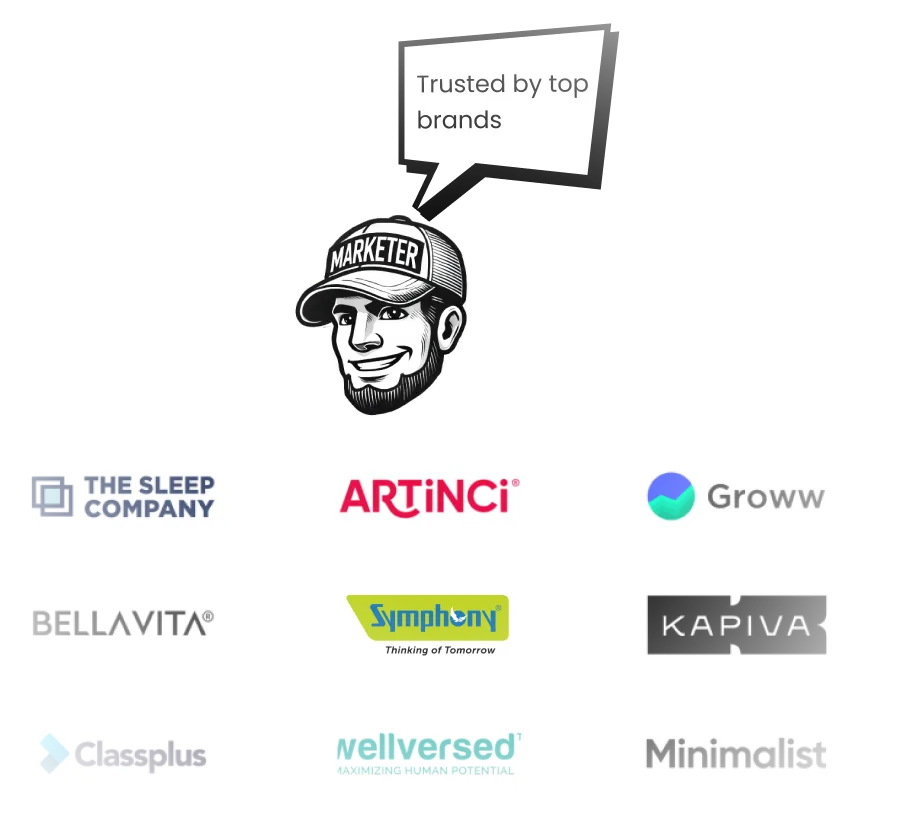Failed Experiments are Loss Preventions in CRO
Highlights of the talk
- Experimenting in digital marketing from ground zero
- Learning from failed experiments to prevent loss to business
- Learning theoretically Vs practically
- Prioritizing high test ideas with respect to high impact pages
What prompted you to take up this field and what keeps you going?
It’s been a pretty long journey of 20 years, even before it was named CRO. I started around 2000 at a dutch insurance company and they asked me to build a new professional website. Those days the internet was an IT kind of a thing, no one knew what to do with it. No one actually knew how to create a good website.
I worked for the insurance company and also for banking for about 10 years. Thereafter, I decided to make a switch and I started as a freelancer and after many years eventually joined the ClickValue team.
Back then what we did was a lot of research. We got help from a couple of marketing agencies. In our research, we would ask people how old they were, from which region they came from, what was the intention and whether they succeeded in the visits.
That was our Google Analytics to know why visitors visited our website as we wanted to start learning visitors and their intention and behavior.
About ClickValue
Tell us about ClickValue. What differentiates it from other CRO agencies?
We are a pro at the CRO process. We get started very quickly. We created this process over 10 years. We cover all aspects of CRO, we have designers, researchers and developers, copywriters, psychologists and many more team members that add value to the team. With the experienced people in our team, we deliver a lot of value to our customers.
We often hear this from CRO experts that their work is all about testing ideas. There are always hits and misses in the process. So how do you approach these successes and failures and what are your learning from them?
We actually don't call them wins and failures but wins and loss prevention with our customers or the product teams we work with. They have on board people from development, design and UX. Together they invented a new innovation or an optimization of that product.
We join those product teams and add research and validation to that process. In case of innovation, you want to test if it's working for your clients, you run a test. If it doesn’t create a better user experience, it's loss prevention. With these ideas, we create a better business case, but we also prevent loss.
Optimizing website
When you begin website optimization efforts on the website, what are the few things that you start with?
Most times we start with a job completion survey to understand what's the goal of the visit and whether they are having success in their goal and achieving that goal. We create some top tasks out of the first survey. Next, we combine Google Analytics with the survey tool.
Based on the job completion survey, we can easily notice which pages have the most failures and which pages have the biggest impact for the company and we can see where the biggest user problems are and start optimizing there. We always try to start with optimizing on pages which have the biggest impact for the company.
So we always check which pages have the biggest impact to start and restart and then the job completion survey is a nice way of discovering user problems.
We start with a lot of research, we have a whole tool kit full of research possibilities. We create opportunities that they can evaluate in A/B tests and analytics.
What resists users on the website?
According to you, what are the biggest hurdles that a visitor faces on the website?
There could be a lot. We start when we do a good check and good audit on the website.
Delay in page loading
A common mistake is that the speeds of a lot of websites are really under performing. So when you want to run an A/B test and you have a very slow webpage, you can A/B test 20, 40 times, but when it's really slow, that's for a lot of people is the main reason to skip the journey because they are in a hurry if we want to purchase.
Usability
We can test with a call to action or a sticky call to action on the mobile page. The CTA shouldn’t appear on the front of the mobile page. That could be the reason the page is not converting. So sometimes just improving its usability works.
Brand awareness
You should be on the top of mind of buyers with brand awareness. You need to showcase ratings and reviews. Creating trust is important.
Pricing
People do check out competitions’ prices and if yours is the highest, there will be resistance.
The mix of proposition, pricing and positioning
Sometimes it's a combination of proposition pricing and your position in the markets. It’s all about how well people know your brand. That’s why CRO isn't only a marketing thing because for the proposition you need to get in contact with the communication departments and other departments. All the departments have to be a part of solving the problem. So, in our experience, what can go wrong is always not just the website. It’s the total experience.
Personalization
What is your take on personalization?
Personalization has been around for more than 10 years. Everyone talks about it but not everyone can handle it. In my opinion, personalization approach is the same as the CRO approach. For instance, when we start with a new customer and the customer has the ability to run 10 tests a month, but they just started with optimization and they don’t have that experience. So we just don't start with the 10 tests because we also want people in the organization to learn experimentation and how it's benefiting their business.
So we first have to do the basic A/B test. Then we see that the intent of the user is clicking. We try to help people in the organization learn and adapt to CRO. It’s the same with personalization. One should start it at a mature level.
When you have so many people in your team, and let's say it's a big project, there must be so many ideas for experimentation coming on board. How do you generate these ideas and then how do you prioritize them?
We always work with the usual Kanban board, and then based on our processes, we start with research, doing a design, a solution design, then create a validation, which is very important because that's how the designer is briefing the developer. So the developer can build in new buttons or new links so we can measure them in the tests. After the tests are run, we evaluate them.
That's roughly the way we create and use the Kanban board. We always try to onboard more and more departments within that company. We use the ice method. It helps in prioritization based on that, we choose the next test.
We always have our prioritization, but we also try to understand from other departments which way the business wants to move up and we adapt accordingly.
Tools used for CRO
Do you rely on tools?
We are always very objective with tools. We always ask companies which tools they have on board. A lot of times they already have their own tools. We just adapt and work with those tools.
We have used FullStory, ContentSquare, Google Analytics, VWO, Google Optimize and HotJar.
Learning in the CRO industry
Being an expert in CRO for so many years, keeping up with the latest in the industry is important. Which are the few blogs or influencers that you follow or you would suggest others to follow?
I read a lot of posts on LinkedIn and there are a lot of good CRO specialists whom I follow, namely Jonny Longden, Manuel Da Costa and David Manheim.
Is there any good advice that you wish you had got early in your career as a marketer or CRO?
Reading blogs and resources are a good way to learn, however, there’s always a difference when you learn from someone in the team. It’s important that you learn as a team member from others more experienced than you. So, my biggest advice would be to learn practically, not just by reading theoretical concepts.








.svg)


.png)